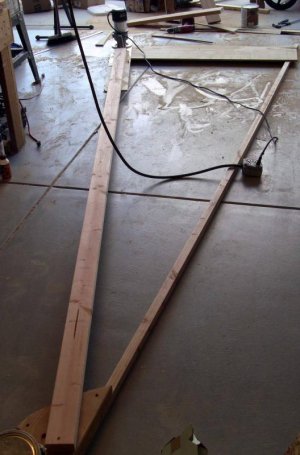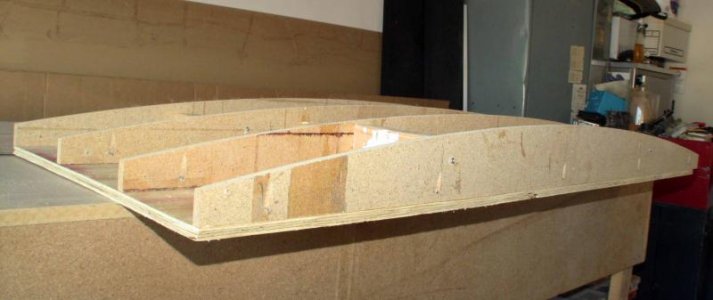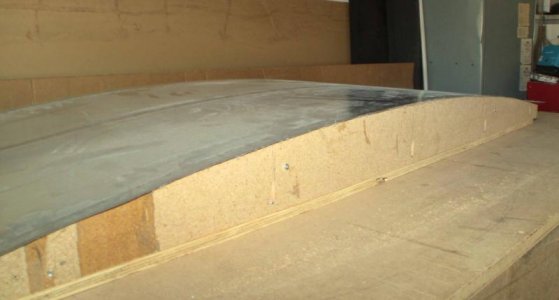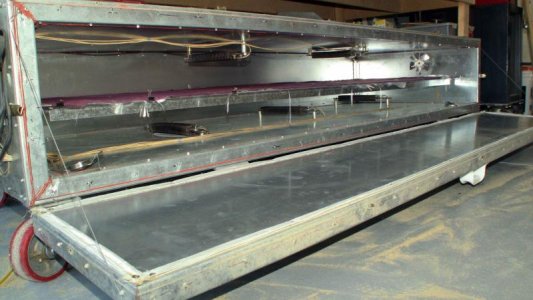adambowersva
New member
Hey all...its been a long time since i have been last on... but I finally am getting back into the fish. i just picked up a 240 gallon acrylic tank, and have never worked with acrylic before so i thought i would post in here to get some answers
the tank is a 240gallon 2ftx2ftx8ft made out of 1/2in on the sides, and 3/8in on the front back top and bottom. it has a one piece euro brace top with two overflows on the back. the bottom is drilled with 4 holes.
i will be building the stand out of 2x4, plywood and foam for the top.
the tank has scratches, some deep, so i will be using this 1,2,3 formula (3 separate bottles cant remember the name) that is supposed to 1 take out deep scratches, then 2 is for fine scratches and 3 is a shine and buff paste.
it was used for salt water before, and i think the guy dropped some rock work and had it heat buffed or had a heater melt it a little in one spot (about 4-6inches long) i did try to get a picture, but i cannot get it to show up on any camera. there is what looks like two tiny (nail head size) spider web type crack things in the acrylic at that point
-can this tank be used?
-would you modify it?
-is a 2x4 stand ok with a plywood with thin foam top ok?
-i was thinking about closing off the holes in the bottom... should i just acrylic plates down or put in bulk heads with ball valves... etc.
any other ideas...questions...comments?
Regarding the tank dimensions/specs...understand that the top eurobracing is a very important part of the tank. This was clearly a custom built tank because I don't know of any manufacturers that would mix acrylic in that particular way. Of course the only remotely reasonable thickness acrylic there is on the sides...the area that needed them the least, but the smallest area so likely why they ended up there...cost. I would personally be worried about this tank quite a bit.
The scratches were also likely caused by scratching the tank while cleaning it with a scraper. This is compounded when a tank has a substantial bow...bowed acrylic and flat scraper don't mix very well. And I can imagine that this tank bows A LOT!
The spider web cracks also concern me as its doubtful to be crazing how you are describing them and these in themselves could grow and compromise the tank. The compromised melted section may also be another issue.
As for the drilled holes you could use a bulkhead and a threaded cap to close them off, but would need to add holes in the stand so they don't create a stress point. You could also use Weld On and acrylic plates to seal them as well. Hell you could use acrylic plates and silicone if you wanted to as the water pressure would keep them secure almost indefinitely.
IF you are dead set on using this tank..big IF..I would strongly suggest you set it up in a garage or somewhere similar and water test it first. Use a long straight level or other known straight board and lay it horizontally across the front panel and check how much it bows on the ends. Measure this number and let us know. I wouldn't be surprised to see this bowing at well over 1/2" (depending on the configuration of top eurobracing and cross braces) which begins to get a too scary for me personally...especially with the other compromises you mention.
Look at it this way...if you are setting this thing up as a reef tank...even if it lasts for a year or two...I firmly believe it will fail at some point. It may not be a catastrophic blow out and you may be able to save some or most of your livestock when it does happen, but how much money will you lose when that does happen?....Likely more than the cost of the tank.
Also, if you decide to keep it and fix it up...regarding your scratches since you say there are a lot and many are deep the Novus 1,2,3 (thats the one you were trying to mention) may not handle, at least not quick enough, some of the deeper scratches. I would get an orbital sander and some micro mesh. Start with regular wet/dry sandpaper (use it wet) at 320 on the deeper scratches till they are gone. Use a higher grade for the shallow ones....maybe starting at 1000 and work down if necessary till you see progress to know what step you should be using without creating extra work. Work your way up to 1000 then use the micro mesh kit. If you buy the kit it will take you all the way up to 12000 grit which creates scratches so small the human eye can't even see them....this will give you the optical clarity you should be aiming for on the tank.










